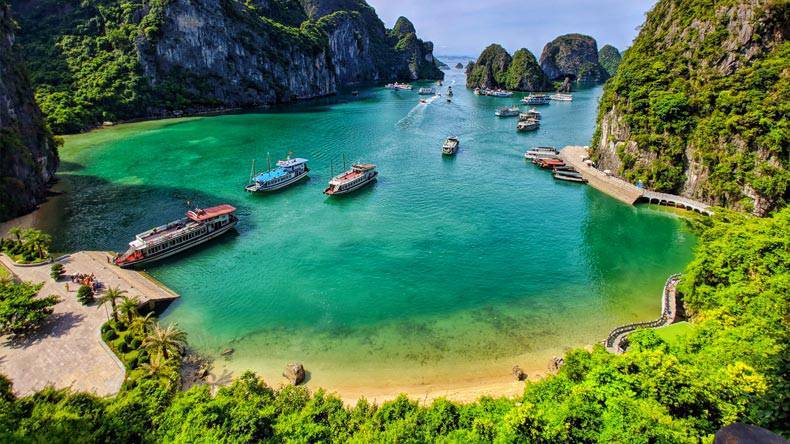Halong Bay Guide
HALONG BAY BIODIVERSITY VALUES
Research results show that Ha Long Bay is filled with diverse tropical ecosystems including coastal mangrove habitat, coral reefs, seagrass habitat and tropical tree forests.
The topography of Ha Long Bay has a very complex structure because the coast includes many large estuaries which provide an important and abundant nursery and food source for many species of marine creatures and the thousands of islands create additional coastline and many bays. Relatively stable water levels (the tidal change is not large), small waves, and the stable climate of Ha Long. (Average temperatures from 19 – 25 ° C) provide conditions very favorable for these naturally stable ecosystems.
Scattered throughout Ha Long Bay are lovely coral reefs often found at a depth of 4 – 6 meters, with a particular concentration near the eastern and southern shores. According to marine scientists, there are 163 species of corals in the bay which form disks, tree-shapes, and underwater gardens of many colors. The coral reefs create a vibrant habitat for as many as 107 species of fish, as well as seaweed, crustaceans, and microscopic marine creatures.
In addition to the coral reefs, one can find mangrove forests in many of the coastal areas of Halong Bay, particularly near Tuan Chau, Cua Luc, and Ba Che. The Quangninh area is home to many varieties of mangrove trees most abundant in northern Vietnam. Mangrove forests create a unique landscape of fascinating intertidal life including fish, crustaceans, and shellfish and also support a variety of migrating birds.
Besides the two ecosystems mentioned above, Ha Long Bay has abundant tropical forests with many species of trees and plants. The forest ecosystems house rare wild animals such as deer, mink, squirrels, and monkeys.

Ha Long Bay also supports a number of fish-farms which supply seafood to the rest of Vietnam and other countries. Marine biologists and their students study the ecology of the area and help develop markets for the farmed sea grass, seaweed, algae, fish and shrimp. Farther offshore, where populations of shrimp, fish, squid, abalone, and other sealife exist, thousands of tons of food are caught annually.